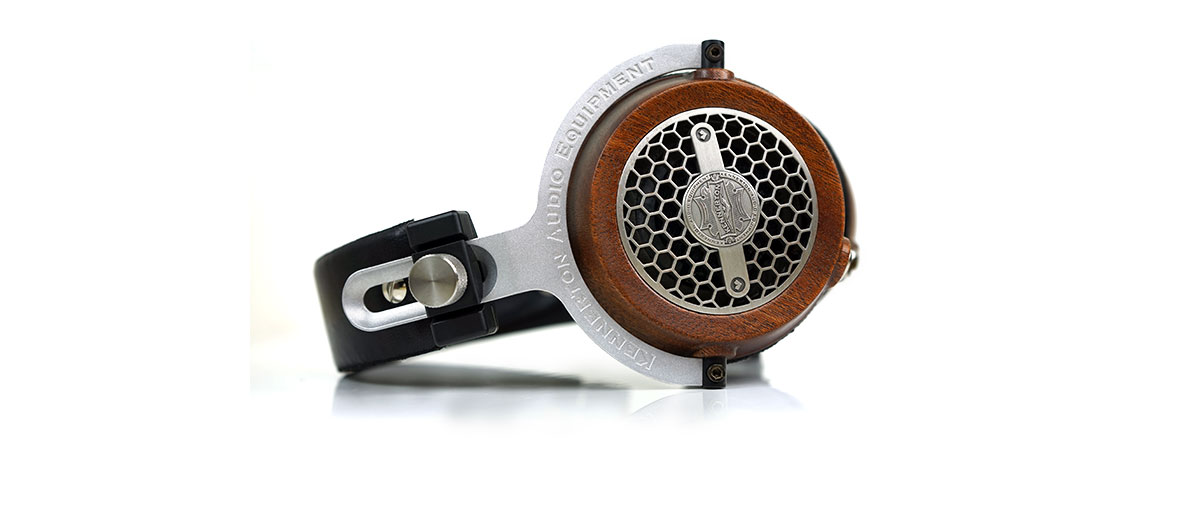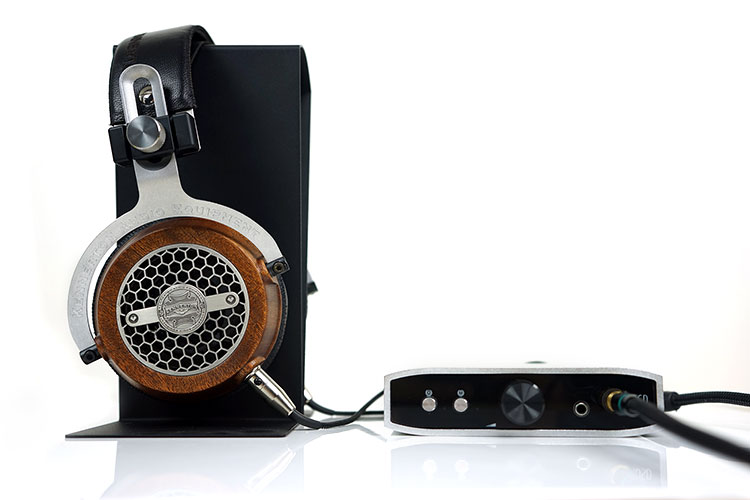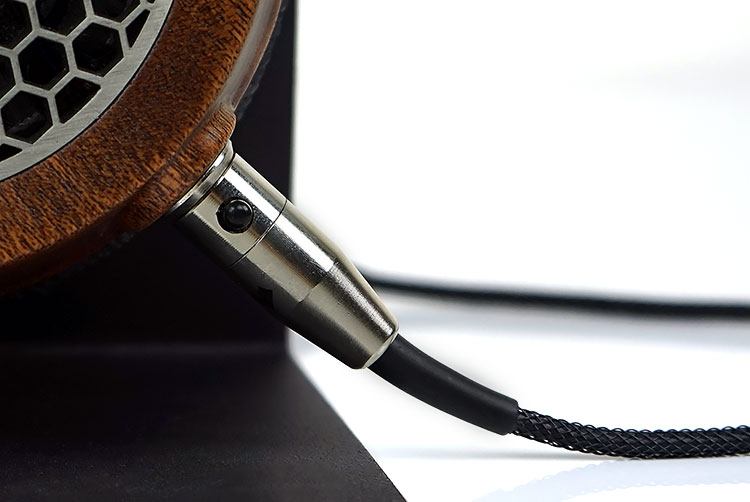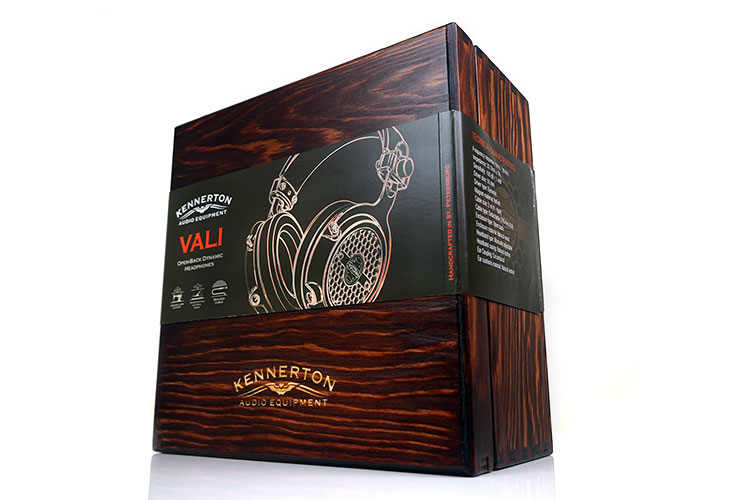Sound Impressions
Tonality & Presentation
The Vali has a warm to natural tonality with a fun sounding presentation. I would say it sits somewhere closer to an “M-type” frequency response rather than a “U-type” with elevated responses across the mid-bass, mid-range, and to a lesser extent the lower treble. This makes for an exciting but smooth sound and one that is not over-cooked which I like also. It is punchy but controlled and tight with a smooth delivery as well as a pleasing level of clarity and detail.
Most striking to me is the contrast between the low-end up to the mids and then from the upper mids onwards. You get the impact and warmth from the mid-bass delivery but as you move on up it doesn’t translate to excessive bloat or warmth in the Vali timbre so it also sounds quite clean and resolving.
Smooth Delivery
Kennerton has also resisted injecting too much energy into the upper mids and lower treble. Whilst it takes second place to the mids presence it has enough db boost to give a natural smooth delivery though slightly less air and sparkle. Still, the percussion performance of the Vali is so natural sounding with excellent body that you never really get distracted by the final octave roll off.
With that kind of presentation and tuning the staging on the Vali is more focused on instrumental and vocal presence which are more forward and intimate sounding. The staging has decent depth but that slight roll-off below 70-80Hz outstanding low-end rumble. Combine that with a more laid back treble response beyond 5k then you have a predominantly mid-bass to upper mids delivery with thick noted or meaty guitar work.
I tend to find this tuning to be tailor-made for rock and metal and anything with a strong male vocal and so it is the case with the Vali. I just love it with bands like Mr. Big, Dee Snider, Brother Firetribe and the big four from the late 80’s era Thrash scene. It also does a fairly good job on some modern punchy dancefloor EDM though I tend to prefer a little more sparkle for that synth work that tends to float above the percussion.
Bass
The Vali has a mid-bass bias in its low-end performance with something like a 6-8dB difference between the 20-80Hz marker gradually increasing from 20Hz to its peak around 80-100Hz. Beyond 100Hz it has a very gradual dip that stops around 500-600Hz or just as you hit the lower mids. Normally I am used to a sustained dip until 1k but not so with the Vali which starts to pick up some energy again much earlier.
As a result, the Vali bass is punchy and full sounding with some decent warmth but again as mentioned it is not bloated for me and remains relatively tight and pacey. It does though lack a bit of sub-bass rumble and power with that roll off beyond 70Hz.
That gradual dip to the lower mids never really gets sucked out so it will not sound detached or cold. Lower instrumental timbre on the Vali will come across as very natural to slightly euphoric with a slight even harmonic bias.
Mids
The Vali mids are forward, smooth sounding and full bodied. From 500hz to around 1-2k it is pronounced and on even par with its mid-bass presence with about a 5-6dB jump from its 500Hz marker.
As such instrumental presence is forward positioned along with lower pitched vocals, primarily male vocals and a fair amount of female vocals in the lowest contralto pitch. Instrumental timbre is on the smooth tot hick side and slightly euphoric with decent levels of warmth but not so much for it to sound wooly and overly smoothed.
Detail is good, very good actually though not quite as defined and complex sounding as the LCD-2 mids. The forward nature does bring a more center focused staging quality to you do not get huge width but you do get good imaging and decent instrumental separation. The ever so slight dip down to 500Hz is essential to prevent a muddy sound from encroaching into guitar and lower mids string work so it stays satisfyingly clear
Treble
Transitioning from the mids to treble there is a little drop at 2k then another bump from 2-4k followed by yet another little dip, rise, and fall from 5-8k.
Throughout this journey of little ups and down the predominant trend is downwards, albeit in a stepped fashion. It helps to take the edge of the treble and keep the sound generally smooth and rounded but retaining enough odd harmonics to deliver a natural sound and avoid sounding dark.
I love how percussion sounds with the Vali as a result even if they are a little back in the mix with a presence drop from 4-6k. You get some nice body, but a precise enough attack and not too much decay to avoid it being splashy or peaky. Nothing brittle or thin about the treble performance on the Vali.
Does it lack air? Yes, it is not the most extended of top-end performances so you will not get a deluge or sparkle and that hi-fi type top-end note. However, it is not shelved down either, more of a gradual roll-off done tastefully.
Matchability
Efficiency
The Vali is rated at 32Ω and 100dB which makes this a surprisingly efficient headphone. It is not quite as sensitive as the AKG K812/72 which has a rating of 112dB but should be marginally easier to drive compared to the AKG’s 36Ω rating.
I like this. I like that a headphone coming in at just under $1k does not require a huge power plant to drive. If you have a fairly solid DAP you will find the Vali to sing fairly happily from it. The inclusion of a cable with a 3.5mm jack seems to hint that Kennerton believes the same also.
DAPs
DAPs such as the DX200, R6, X7ii all have no issues at all driving the Vali in low gain mode, pretty much on the same level as some IEMs actually. Even old workhorses such as the Colorfly C4Pro sound excellent, especially using that quarter jack port with the braided cable of the Vali. Lovely matchup.
Amping & Synergy
Mind you, that is not to say the Vali will not scale a little with good amps, be it a DAP or a more powerful desktop amp. The answer to that questions is yes they will though not quite to the level of say a Hifiman or HD800. Dynamics will get a boost on a desktop system or portable amps as will the level of instrumental separation and staging width. The key though for the Vali is synergy.
Colorfly C4 Pro
40% using the analog volume slider
This is a smooth, natural sound with a slight lingering decay but otherwise very rich and flowing. Staging is still on the intimate side but the C4 does a good job of keeping instrumental separation clean and clear with good imaging and control. I also love its quarter jack input meaning I can keep my preferred braided cloth Rean branded cable connected without changing connectors. EQ off or the jazz present sounds the most realistic to me, the rest just sound off, bloated and lacking in clarity.
HiBy Music R6
50-50 digital steps low gain, unbalanced.
A slightly darker and thicker sound on the Vali compared to the C4 Pro. The bass is also much more physical, hard-hitting with better sub-presence. Staging is a bit deeper also though the sound gets a little darker. Mids shine on the R6 with a very natural timbre, wonderful male rock vocals without a hint of sibilance and plenty of texture in lower mids instrument notes. Percussion again has that lovely body though slightly further back. Treble is a bit more rolled off than the C4 and lacks a little air.
DX200
95-105 steps on low gain unbalanced.
This is a more accurate and linear sound than the R6 with more sparkle and air, a slightly leaner low-end and lower mids and a touch better clarity and timbre to instrumental notes. Vocals are not quite as forward or as full sounding as the R6 but rather more accurate and yet still very smooth sounding. This is the ideal DAP pairing with the Vali. It delivers the more natural accurate sound out of the tested pairings.
Opus#2
90-100 steps low gain unbalanced.
The Opus#2 breathes more life into the top end with more air and a wider presentation. Vocals are very smooth and engaging and perhaps delivers the most open midrange out of the DAPs tested. It is just a little smoother sounding than the DX200 which goes a bit more neutral in comparison. The Opus#2 doesn’t deliver the same punchy low-end physicality of the R6 with the Vali, like the DX200 it pulls it back in a little but still keeps the tone warm. This would be my choice alongside the DX200 for DAPs for most genres. I would still grab the R6 though if I wanted additional low-end physicality.
FiiO X7ii
75-85 digital steps low gain unbalanced.
The X7ii and Vali combination is a bit cleaner sounding than the R6. Its bass has a bit more of a kick in it on the Vali than the linear DX200/AMP1 card unbalanced but it comes across as a bit brighter than both the DX200 and R6. It also sounds a little bit thinner in the mids than both the R6 and DX200 but airier than the R6 treble. It also delivers a bit more sparkle than either of those two DAPs though it is not as airy as the Opus#2. Overall the X7ii and Vali are good all-rounders and have some nice treble energy but can come across as a bit more digital sounding using the Vali.
Chord Mojo
Volume red level.
Plenty of power on tap with the Mojo. The Mojo low-end with the Vali is planted, physical but not quite as warm sounding as the R6, a bit more neutral in timbre also with absolutely excellent levels of detail. The instrumental separation and quality of staging took a huge leap forward with the Mojo and even more so with the Hugo 2 for that matter. A much more refined delivery than the X7ii and more accurate sounding than the R6 and Opus#2.
RHA L1
2 out of 5 volume, low gain, unbalanced out. No EQ used.
A black background, excellent control and an impressively snappy low-end with the Vali. It is punchy but super tight with an excellent transient response and very well defined. The staging was wider than the DAPs and on par with the Mojo though the Mojo was a little more holographic sounding with the Vali. The sound is a touch drier with the SS L1 but there is a little more air and better spacing in the mids and lower treble.
Cayin iHA-6 (Oppo Sonica DAC/iDAC-6)
Low impedance, low gain and roughly 11-12 noon on the pot.
Surprisingly, whilst I loved the dynamics on this pairing it tended to thin out the treble a little more. So whilst I got great dynamics, excellent clarity and a super smooth low to mid-range pairing the Vali did lose a little weight in its percussion in favor of a sound that I think is too clean. Switching to the iDAC-6 was a more suitable pairing with the iHA-6 and the Vali. I got a more impactful low-end, better PRaT and that more body back into instrumental and percussion timbre.
Tip – keep the setup fun and the Vali will sound fun. Keep it analytical and it takes something away from the Vali.
Select Comparisons
Sorry gears no Focal Elear in the office to compare with, it is in the US with our other reviewers so when we get one we will add it to this comparison list. Possibly in March 2018. All the below were tested using a Chord Hugo 2 DAC, Oppo Sonica DAC, and Cayin iDAC-6. The amp used was the Cayin iHA-6 amp in both balanced and single-ended low-impedance outputs with low gain selected. Test tracks were all 16BIT 44.1k FLAC using a PC USB out to the DACs.
Audeze LCD-2 V2.1 & Fazor Edition
$999
Technical
The LCD-2 V2.1 or pre-fazor is my absolute favorite open back planar from Audeze. It is not the worst to drive as planars go, though the Vali is a good deal easier to drive optimally than the LCD-2 which does need something more solid than a DAP to get going.
The LCD-2 v.1 is rated at 70Ω and 93dB which is much less efficient than the 32Ω and 100dB rating of the Vali. The LCD-2 v2.1 will scale a bit more in terms of dynamics, staging, and resolution with a balanced amp such as the Cayin iHA-6 whereas the Vali will sound better but doesn’t quite have the transformational prowess of the LCD-2 on a big watt amp. Mind you vice versa, the Vali is pretty darn good on weaker sources whereas the LCD-2 runs a bit flabby with a tinny midrange and compressed dynamics when underpowered.
What thing that was very unusual for me was the weight and fit comparison. The LCD-2 is much heavier, 100g heavier in fact but the balanced and use of larger cups/pads was much better. The result was that the Vali actually felt the slightly heavier of the two on my head. Most likely due to the majority of the pressure balanced skewed to the side of my head. There is an element of personal fitting in this so your mileage may vary.
Sound
By golly, the Vali presentation and tonality are a bit more fun than the LCD-2 V2.1 and I am very surprised at that. It may lack a little in terms of detail compared to the LCD-2, especially in sub-bass texture and presence where the LCD-2 reigns supreme but I much prefer the upper mids and treble performance of the Vali.
On the LCD-2 I get fantastic texture and detail and perhaps a better balance in terms of instrumental and vocal positioning. However, vocals can come across as a little bit harder in the attack with a little more sibilance creeping in on the LCD-2. The Vali is having none of that with a buttery smooth and slightly rounded attack.
Another big difference I find between the two comes into focus with the upper mids and lower treble. Again, detail on the LCD-2 is better with superior clarity and will give you a bit more in articulation. However, it all sounds a little “pinched” and glassy on the LCD-2 compared to the more balanced tone and better body of the Vali lower treble.
The tonality on the Vali is more natural, especially percussion and anything hitting the upper mids and lower treble. The LCD-2 just sounds a little off in that regard. Combined with the lack of air in the two on the final octave this is where your focus will naturally be drawn.
MrSpeakers AEON Flow
$799
Technical
The AEON Flow is MrSpeakers latest open back planar and we will have a full review of this excellent headphone coming in the next few weeks or so. It is rated at 13Ω and 93dB so whilst it does not need a much power as the Vali it is not quite as sensitive and does need a bit more volume than the Vali.
Comfort wise the AEON Flow is excellent. the teardrop-shaped cups beautiful contour around the ear with very little negative side and downward pressure. The gimbal length is perfect also for my head at least. It is also a good deal lighter than the Vali at 340g compared to 450g.
Sound
Tonally both have a warm to natural core tonality though the AEON Flow presentation is a little different to the Vali. This is a slightly more relaxed and not as forward sounding as the Vali particularly in the mids. Whilst it does have a controlled sub-bass response there is better presence and depth than the Vali which tends to go more with mid-bass punchiness and lower mids boosting for a much more aggressive instrumental delivery.
The AEON Flow tends to dial that back a bit more and delivers a very natural and balanced mid-range which dips more slowly from the mid-bass and stays more neutral, particularly from the 2-5k range. The Vali has a bit more energy in that area but both still pull off a very nice and engaging instrumental timbre that ranges from natural to slightly euphoric. It really depends on how forward you want your mids to be with the Vali pushing it harder than the AEON Flow.
Treble on the AEON Flow is a bit more balanced and extends a bit further with more sparkle and articulation in the final octave. The Vali has a bit more upper mids and lower treble focus with excellent percussion timbre but does not have the same upper treble presence or air as the AEON Flow.
AKG K812
$1499
Technical
The K812 is AKG flagship open back dynamic driver headphone rated at 36Ω and 112dB. Despite the drop in sensitivity, the Vali will get louder faster than the K812 on desktop amps up to 1-2 watts. Both do not need big amps with plenty of grunt and will drive just fine off good amp signals with less power.
Physically both are attractive looking headphones with the AKG opting for a more subtle slightly modernistic and lightweight design and the Vali going for that aggressive slightly retro woody look. I love the AKG pads though and how they envelop the ear and provide a great seal even with an open headphone such as the K812. The Vali cups are more sumptuous but the smaller spacing and downward pressure from the weight of the cups leaves it trailing the K812 a bit in the comfort stakes.
Sound
The Vali tonality is smoother, more rounded and less edgy, particularly in the upper mids and lower treble. It also has the more forward mids of the two with greater instrumental note body and a punchier mid-bass performance.
The AKG K812 has a more neutral tonality with a brighter more open top end with bags more treble sparkle and air. It is the faster and more detailed of the two with a more open sounding midrange. It is also fussier, brighter and more forward sounding in its treble response making it a tricky customer to get amping synergy just right.
Instrumental timbre on the K812 is way more neutral pulling a tiny bit of warmth from a mildly elevated mid to upper bass response. The Vali is much thicker, richer and euphoric in that regard but still retains very good clarity.
Usually, I go with something like a tube amp or a warm SS sound with the K812 just to put a lid on the splashiness and elevated sibilance levels. I find the Vali must better in terms of finding a good amping match and it is generally the far more forgiving of the two.
Our Verdict
For some reason throughout this review, I thought what I am really missing here is an Audio Technica ATH-W3000ANV. Aural memory can play naughty tricks on you but coloration of this type just reminds me a little of that feeling when I reviewed the W3000ANV. This is a fantastic mid-focused fun sounding headphone with a unique aesthetic that makes it feel, well, a bit special in the hand.
Do not buy this for analytical accuracy or audiophile recording bliss. Do buy the Vali if you want a forward sounding and punchy open dynamic headphone. It combines excellent clarity with a presentation that is warm to euphoric, rich and just downright fun. It is colored but boy it is one heck of a pleasure to listen to with rock and EDM.
The detail is good by the way, do not let my numerous mentions of smooth sounding put you into a mindset that this is some smoothed over romantic tuning. It is not. Kennerton has got the tuning nicely balanced peaking the mid-bass, mids and male vocals and lower treble to keep it exciting but never one dimensional.
Caveat
The only caveat I have is the pressure distribution and the length of the gimbals. It will be a polarizing debate because of head shapes but it one of the few that is off for me with cups going beyond the ear on the shortest headband setting. All the pressure is on the ears going inwards and downwards with some heavy-duty clamping. It can get uncomfortable after a period of time.
Apart from that the price point, especially the natural wood lower-priced version, is very good value for me. I think the materials choices are thoughtful, the packaging and finished even more ambitious and the general pitch to be on song. The Vali is an excellent and fun sounding headphone.
Vali Technical Specifications
- Driver Unit 50 mm
- Frequency Response 10-28000 Hz
- Sensitivity 100 dB
- Impedance 32 Ohm
- Maximum Input Power 500 mW
- Cord length 2m detachable 4-pin mini XLR OFC cable (3.5 mm)





